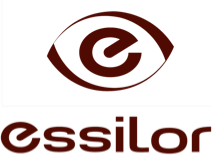In the realm of eye care, understanding the nuances between a vision test and a traditional eye exam is crucial for maintaining optimal eye health and visual acuity. While these terms are often used interchangeably, they serve distinct purposes and are conducted by eye doctors to address different aspects of ocular wellness.
What is a Vision Test?
A vision test primarily focuses on assessing the clarity and sharpness of one’s vision. It is often the initial step in evaluating one’s visual abilities and identifying potential refractive errors such as nearsightedness, farsightedness, and astigmatism. Vision tests typically involve reading letters or symbols from a chart placed at a standardized distance.
During a vision test, an individual’s visual acuity is measured using a Snellen chart or other similar tools. This test helps determine the need for corrective lenses and serves as a baseline for further evaluation during an eye exam.
The Role of an Eye Exam:
In contrast, an eye exam encompasses a comprehensive assessment of the overall health and functionality of the eyes. While vision testing is a crucial component of an eye exam, it is just one aspect of a broader evaluation conducted by an eye doctor, also known as an optometrist or ophthalmologist.
During an eye exam, the eye doctor conducts various tests and examinations to evaluate eye health, detect potential abnormalities, and diagnose eye conditions or diseases. These assessments may include:
- Visual Acuity Testing: Similar to a vision test, visual acuity is assessed using charts or digital screens to determine the sharpness of vision at different distances.
- Refraction Assessment: This test helps determine the precise prescription needed for corrective lenses by measuring how light bends as it enters the eye.
- Ocular Health Evaluation: Through techniques such as slit-lamp examination and dilated eye evaluation, the eye doctor examines the structures of the eye, including the cornea, iris, lens, retina, and optic nerve, to detect signs of diseases such as cataracts, glaucoma, macular degeneration, and diabetic retinopathy.
- Intraocular Pressure Measurement: Elevated intraocular pressure can be indicative of conditions like glaucoma, so measuring it is an essential part of an eye exam.
- Additional Testing: Depending on individual risk factors and symptoms, additional tests such as visual field testing, color vision testing, and imaging studies may be performed to assess specific aspects of ocular health and function.
Key Differences: Vision Test vs. Eye Exam
While both a vision test and an eye exam involve evaluating visual function, the primary differences lie in their scope and objectives:
Purpose: A vision test is primarily aimed at assessing visual acuity and determining the need for corrective lenses, whereas an eye exam encompasses a comprehensive evaluation of eye health and function.
Comprehensiveness: An eye exam involves a broader range of assessments, including ocular health evaluations, intraocular pressure measurements, and screenings for eye diseases.
Professional Involvement: While a vision test can be conducted by non-medical personnel, such as opticians or an optometrist technicians, an eye exam is typically performed by qualified eye care professionals, including optometrists and ophthalmologists.
In summary, while both vision tests and eye exams play essential roles in maintaining optimal eye health and visual function, understanding the distinctions between the two is key to ensuring comprehensive eye care and early detection of potential eye conditions or diseases. Scheduling regular eye exams with an eye doctor is fundamental to preserving vision and promoting overall ocular wellness.
*Click HERE to schedule yours today



